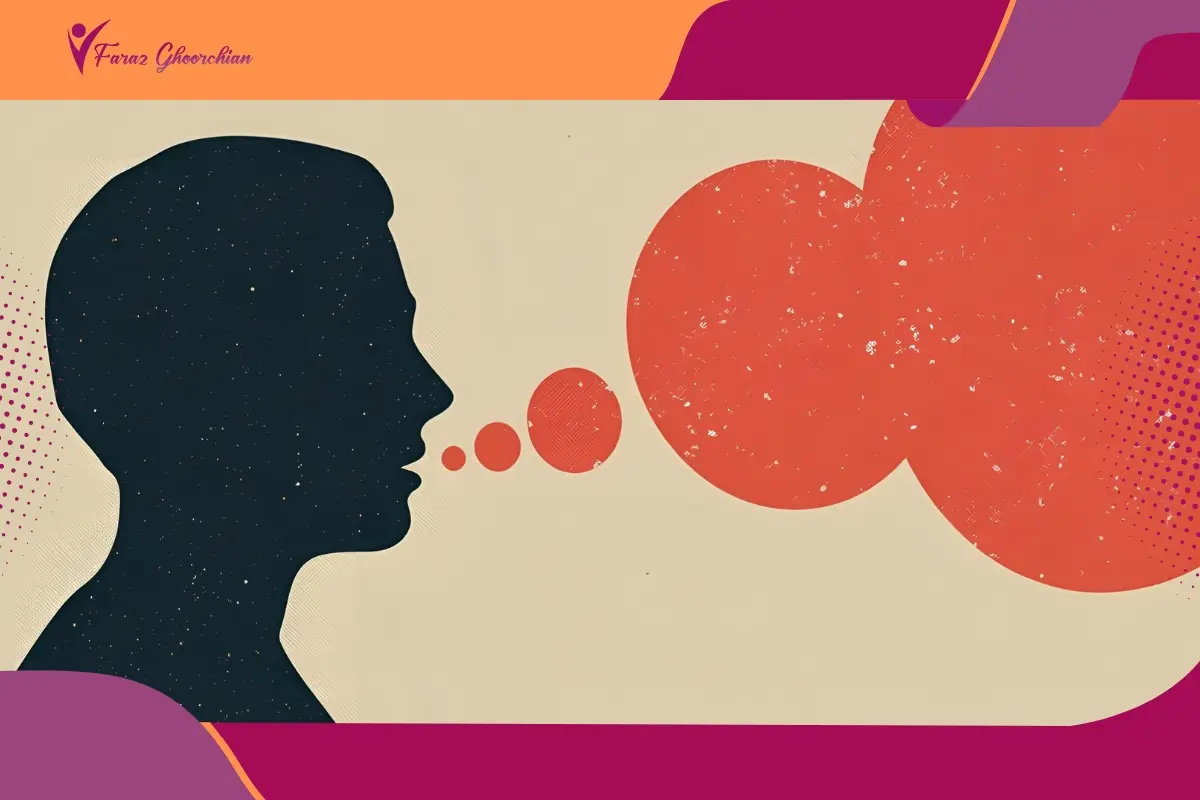Learn the types of nonverbal communication with examples of gestures, body language, and tone of voice, and see why they matter in daily and professional life.
- 1. Introduction
- 2. What Are the Types of Nonverbal Communication?
- 3. Facial Expressions
- 4. Body Language and Posture
- 5. Gestures and Hand Movements
- 6. Eye Contact and Gaze
- 7. Paralinguistics and Tone of Voice
- 8. Proxemics
- 9. Nonverbal Communication in Business
- 10. Conclusion: Why Nonverbal Communication Matters
Introduction
Most of the time people imagine communication as talking, but that is only the surface. A large part of meaning comes through the types of nonverbal communication people use every day, often without realizing it. A lifted eyebrow, the way someone stands, or the tone of a single word can shift an entire conversation. When people ask what are the types of nonverbal communication, the list stretches far beyond gestures. It covers facial expressions, how close or distant people sit, and the subtle ways they use their voice. Paying attention to the different types of nonverbal communication can help someone understand feelings more accurately, avoid confusion, and strengthen both personal and professional connections. Words matter, but unspoken signals often speak louder.
What Are the Types of Nonverbal Communication?
Picture two people talking in a café. One says very little, but the way they smile, lean forward, or raise an eyebrow tells the other just as much as the words. That is the power of the types of nonverbal communication. So, if the question is what are the types of nonverbal communication, the answer includes a variety of signals we often take for granted:
- Facial expressions: happiness, confusion, or sadness show up before words are spoken.
- Gestures: a nod, a wave, or even a shrug adds meaning to conversation.
- Posture and movement: how a person stands or shifts in their seat shows comfort or hesitation, reflecting the role of body language in communication.
- Eye contact: holding a gaze builds trust, while avoiding it might create distance.
- Tone of voice: pitch, pace, and volume shape how a message is received.
Noticing the various types of nonverbal communication can help anyone catch the feelings behind the words and respond in a way that feels more genuine.
Facial Expressions
A person’s face often tells a story long before words appear. Among the types of nonverbal communication, facial expressions are usually the easiest to notice. A wide smile can lift the mood of a room, while a furrowed brow can make others pause and reconsider their words. Psychologists often point out that emotions such as joy, fear, anger, or sadness are visible in similar ways across cultures, which is why faces play such a central role in connection.
In daily life, examples of nonverbal communication include the quick raise of eyebrows when someone is surprised or the tightening of lips when they are holding back frustration. These signals are simple, yet they carry weight. Paying attention to them can be especially useful in work settings. Subtle changes like a nod paired with a genuine smile are examples of nonverbal communication gestures that usually indicate agreement. For professionals, noticing these patterns can improve conversations and highlight the importance of types of nonverbal communication in business communication, where trust and understanding often depend on unspoken cues.
Body Language and Posture
Watch the way someone enters a meeting: the walk, the shoulders, even how they sit down. All of this is part of the types of nonverbal communication and body language, and it often shapes impressions before a word is spoken. A relaxed, upright stance can make a person look confident, while folded arms or hunched shoulders may suggest resistance or unease. These are not minor details; they set the tone for how others feel in the conversation.
In everyday settings, examples of nonverbal communication skills are easy to notice. Friends leaning closer during a chat usually show interest. A manager who mirrors a team member’s posture often makes the exchange feel warmer. These subtle signs build trust without anyone being fully aware of it, and they also support what is active listening, since attentive posture shows genuine focus on the speaker.
In professional life, the stakes are higher. Understanding types of nonverbal communication in business communication helps people present themselves with clarity. Standing tall during a pitch signals credibility, and open gestures make listeners more receptive. When body language supports the spoken message, communication feels genuine and far more effective.
Gestures and Hand Movements
If you watch people in conversation, the hands rarely stay still. A wave across the street, a pointed finger during a heated debate, or a quick thumbs-up all belong to the types of nonverbal communication that people rely on more than they realize. These movements add emphasis, help organize thoughts, and sometimes reveal emotions faster than words.
Daily interactions are full of small signals. For instance, examples of nonverbal communication include nodding gently while listening to show agreement or raising a hand to hold the floor in a group discussion. These actions seem simple, but they keep conversations flowing smoothly. At work, hand movements can influence how messages are received. Leaders who use open gestures appear approachable, while repeated pointing may feel harsh. The different types of nonverbal communication shown through hand movements can either build trust or create distance, depending on how they are used and interpreted.
Eye Contact and Gaze
Think about the last time you spoke with someone who really looked at you. That steady connection through the eyes often says more than the words themselves. Within the types of nonverbal communication, eye contact has a special weight because it shapes trust, attention, and even comfort levels. Too much intensity can feel intimidating, while too little may come across as avoidance. This is why people often ask how many types of nonverbal communication truly matter in daily life, and gaze is always near the top of the list.
Simple moments illustrate its power. Examples of nonverbal communication skills include holding eye contact in a job interview to show confidence or softening the gaze when offering comfort to a friend. In business meetings, balanced eye contact supports clarity and reflects the importance and types of nonverbal communication in professional success. Used thoughtfully, gaze strengthens connection, demonstrates Emotional intelligence, and ensures spoken words feel genuine.
Paralinguistics and Tone of Voice
Imagine two people saying the same sentence: “I’m fine.” One speaks softly with a shaky rhythm, the other with a firm, steady voice. The words are identical, but the meaning could not be more different. That is the power of paralinguistics within the types of nonverbal communication. Tone of voice, pitch, and pacing quietly influence whether a message feels sincere, dismissive, or even sarcastic.
When comparing types of verbal and nonverbal communication, this area often feels like the bridge between them. The words are verbal, yet the delivery shapes how they are understood. Common examples of nonverbal communication include lowering the voice to comfort a child or raising it to grab attention in a busy room. In workplaces, leaders who adjust volume and tone display authority while showing sensitivity. This balance reflects the importance and types of nonverbal communication, proving that how something is said can matter more than the words themselves.
Proxemics
Have you ever noticed how some people naturally step closer when they talk, while others prefer a little distance? That space is not random; it is part of proxemics, one of the types of nonverbal communication that quietly shapes comfort and connection. Standing too near may feel intrusive, while keeping too far away can seem cold. These small choices send signals long before words do.
For anyone wondering how many types of nonverbal communication matter in daily life, personal space is one of the most practical to observe. Friends often close the gap during an animated story, while strangers instinctively create boundaries in a crowded line. In the workplace, the same rule applies. The importance and types of nonverbal communication become clear when a leader maintains just the right distance during a meeting, showing respect while still creating warmth. Space itself can speak, and it often decides whether people feel at ease.
Nonverbal Communication in Business
Walk into any boardroom and you’ll notice that people form opinions before a single word is spoken. Within the types of nonverbal communication in business communication, posture, gestures, and tone of voice often set the stage for how ideas will be received. A confident stance or a relaxed smile can build trust instantly, while nervous fidgeting may do the opposite. These cues shape credibility as much as the presentation itself.
Everyday workplace exchanges highlight the same principle. Examples of nonverbal communication skills include a manager leaning forward to show engagement or a team member nodding subtly to signal agreement. These small actions make others feel heard and respected.
For professionals, understanding the importance and types of nonverbal communication is a real advantage. Combining clear speech with steady eye contact, controlled gestures, and emotional awareness shows more than preparation; it shows adaptability. Those who balance spoken words with these signals display strong multitasking skills, especially in negotiations, interviews, and client meetings. In business, success often depends on aligning what is said with what is silently expressed.
Conclusion: Why Nonverbal Communication Matters
Think of the last meaningful conversation you had. Chances are, what stayed with you was not just the words but the look on someone’s face, the tone of their voice, or the way they leaned in as you spoke. That is why the types of nonverbal communication matter so deeply. They give life to dialogue and reveal emotions that words often hide.
When people ask what are the 10 types of nonverbal communication, experts usually highlight expressions, gestures, posture, gaze, touch, voice, and space among others. Knowing what are not types of nonverbal communication helps separate habits of speech from genuine unspoken cues. In the workplace, the types of nonverbal communication in business communication can influence trust during a pitch or cooperation in a team. These patterns highlight the importance and types of nonverbal communication, proving that real connection often lies between the lines of what is said.















